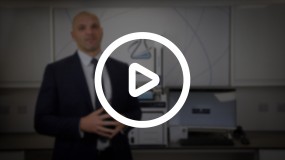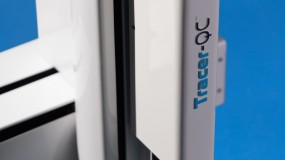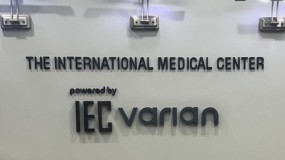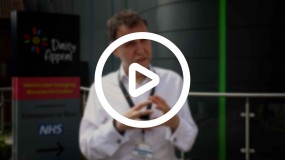A radical and universal new solution for automated quality control of PET/SPECT radiotracers
The Tracer-QC is an automated solution that utilises only an optical plate reader, a pipetting robot and single-use consumable kits for release testing of PET radiotracers.
- 1 Sample
- 1 Analytical Instrument
- All QC Tests
- 1 Traceable and Objective Report
Automated QC Tests
- Colour
- Clarity
- pH
- Kryptofix concentration
- Endotoxin concentration
- Residual solvents
- Radionuclidic identity (half-life)
- Radioactivity concentration
- Radiochemical identity
- Radiochemical purity
- Chemical purity and specific activity
Benefits to using the Tracer-QC include;
Ease of Compliance
- No chance of missing a process, record or signature.
- Objective measurements traceable to standards, without any human interaction.
- Data flow from measurement to batch record.
- Automated.
- Uneditable.
- Completely traceable.
- Regular, automated suitability testing with a permanent record.
- Enables FDA 21 CFR Part 11 (Electronic Signatures) and Part 212 (GMP) compliance.
- No cross-contamination with Tracer-QC, as the sample never leaves the disposable kits.
- Ease of (regulatory or internal) audits with instantaneous data retrieval.
Cost Reduction
- Cumulative annual QC cost reduction of 30% or more.
- Fewer and less skilled personnel required.
- Faster and cheaper training.
- Faster and cheaper audits.
- Electronic access/auditing of records.
- Minimise the cost of addressing 483’s.
- Reduce risk of 483’s by around 84%.
- One analytical instrument to maintain
Improved Efficiency of Quality Control Tests
- 1 electronic report with all QC results, automatically generated.
- Run QC unattended from sample to report.
- Increased throughput to enable scale-up.
- No cleaning or equilibration required with Tracer-QC due to the use of a disposable kit.
- Inventory reduction, eliminating the need to track individual expiry dates of multiple supplies/standards.
- Process standardisation across sites and/or products.
- Single sample injection for all analyses
Existing Tracer-QC customers
Click the tabs below to learn more about our customers and how Tracer-QC is changing the way they work.
Haukeland University Hospital, Norway
Regulatory approval in Europe for 18F-FDG QC
Following a validation submission by Haukeland University Hospital to the Norwegian Medical Products Agency (DMPA), twelve analytical methods running on the Tracer-QC platform have been approved for the Quality Control of 18F-FDG intended for clinical use.
DMPA is widely regarded as a highly reputable regulatory authority in Europe. Its endorsement of Tracer-QC methods for supporting the pharmacopeial quality of 18F-FDG sets an example for other countries following the European Pharmacopeia standards. DMPA complies with the International Council for Harmonisation of Technical Requirements for Pharmaceuticals for Human Use (ICH), as do other authorities in the US and Europe, meaning Tracer-QC analytical methods have met strict international criteria.
You can learn more about this important milestone and what Haukeland's Head of Quality Control Ole Heine Kvernenes had to say about it by clicking the button below.
READ MORE
Hull Molecular Imaging Research Centre, UK
Steve Archibald: Why Hull chose to be the first Tracer-QC customer in the UK
Tracer-QC is being installed at the Hull Molecular Imaging Research Centre. It is a pioneering Centre of Excellence developed in partnership between the University of Hull and Hull University Teaching Hospitals NHS Trust. MIRC houses a dose-on-demand cyclotron and as a combined research and clinical facility, it will deliver superior diagnostics and improved patient outcomes.
In our latest video, we speak to MIRC Director and Professor of Imaging Steve Archibald about how Tracer-QC will allow the centre to automate the QC process to produce a greater range of novel radiotracers for cancers, heart disease, and Alzheimer’s.
READ MORE
International Medical Center, Egypt
Automating 18F-FDG QC in a live production facility
The IMC is a large tertiary healthcare hospital in Cairo which has been using Tracer-QC to successfully release 18F-FDG for administration to patients. The facility chose the automated system over traditional QC equipment to release radiotracers to standards as defined by US Pharmacopeia. Its nuclear medicine department has its own PET production facility, including a cyclotron and hot lab, and the hospital has accreditation from the US-based Joint Commission International, recognising the quality and standards of its healthcare at a global level.
We spoke to Sherif Maher of the IMC to find out how Tracer-QC has changed the way he works. Click the button below to find out what he had to say.
READ MORE
1. Scan the consumables kit
User scans the consumables kit.
2. Add the consumables to the Tracer-QC
User adds the consumables to the Tracer-QC.
3. Deliver QC sample in a shielded pig
User delivers the QC sample in a shielded pig.
5. Tracer-QC mixes and dispenses the sample
The pipetting robot mixes the sample with specific reagents and dispenses them to the analysis plate.
6. Tracer-QC automated testing starts
The reader then analyses their optical characteristics against a set of predefined and validated reference specifications.
7. Analysis is complete
After approximately 30 minutes the analysis is complete.
8. Collect the report
A single page report on up to 10 QC parameters is automatically printed or exported in the desired format.
Tracer-Specific Kits
- Tracer-Specific Kits Trace-Ability have developed kits that are tried and tested for the release criteria of F-18, C-11 and N-13 radiotracers.
- The kits are available both with or without the HPLC function.
Universal Kits
- The majority of the tests available on the Tracer-QC are generic QC tests, which are not tracer specific.
- Universal Kits allow users to run these non-tracer specific tests on any sample.
Research and Development Kits
Research and Development Kits allow users to develop their own kits for QC testing which have not yet been developed by Trace-Ability. Once a kit has been developed, Trace-Ability are able to supply these kits.
About Trace-Ability Inc.
Trace-Ability is a growing California-based company that answered the FDA call for modernization of testing technologies in radiopharmaceutical production. Years of experience in PET industry allowed the founders to recognize the opportunity to revolutionize and simplify PET-QC testing using optical techniques. The FDA funding and collaboration have enabled optimization and solid validation of Tracer-QC technology.
The LabLogic/Trace-Ability Partnership
LabLogic Systems have partnered with Trace-Ability Inc. to provide commercial and software development.
This relationship multiples the capabilities offered by each company individually. It allowed Trace-Ability to focus on the technical aspects of bringing Tracer-QC to market. They include development and validation of the core Tracer-QC technology and production of consumables. Meanwhile, LabLogic was able to leverage years of expertise in software development to develop the intuitive user interface backed up by 21 CFR Part 11 compliance. Finally, the hardware platform is uniquely enabled by balancing existing LabLogic and Trace-Ability relationships with analytical and robotic companies.
Commercialization of Tracer-QC is also a joint effort. On one hand, it benefits from the LabLogic’s established global footprint and track record of successfully launching multiple products in the PET radiopharmaceutical field. On the other, it leverages Trace-Ability’s direct ties with industry, KOL’s and regulators. Participation of both companies in commercialization allows the joint product offering to be optimally tuned to each customer’s technical and operational needs.
A fully automated QC solution with radio-HPLC
The latest development for the Tracer-QC is the integration of radio-HPLC capabilities. Tracer-QC rHPLC includes all the features and benefits of the traditional system, with the added benefit of running radio-HPLC tests as part of a fully integrated and completely automated process.
The entire Tracer-QC rHPLC process is automated from sample to report, including HPLC injection and column priming and cleaning.
With the Tracer-QC rHPLC, HPLC standards come pre-packaged and automatically injected, negating the need for the user to prepare or carry out multiple manual injections.
For more information regarding the Tracer-QC rHPLC, please don't hesitate to contact us.













